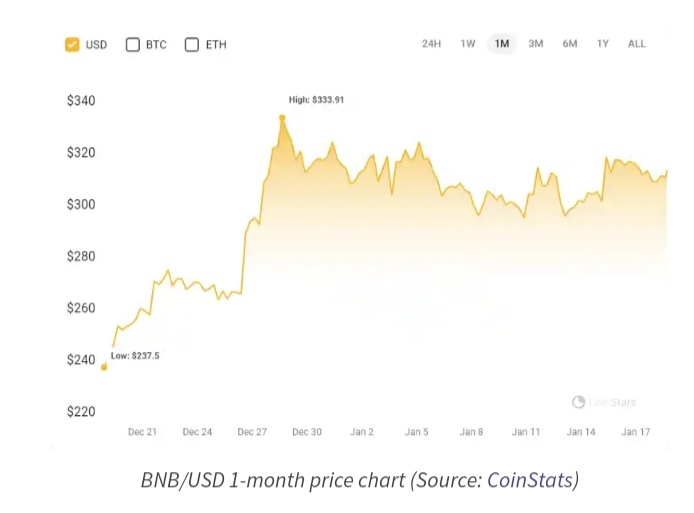Following a challenging phase involving legal obstacles and leadership changes, Binance experienced a notable surge in funds. Since reaching a settlement with US regulatory bodies on November 21, where it admitted to charges such as money laundering and sanctions evasion, the platform has observed a significant influx of $4.6 billion in net inflows, as reported by Satoshi Club.
Following a decline in market share for several months, December marked a pivotal moment as the platform regained ground in spot crypto trading. Further contributing to this positive trend, Binance Coin, the exchange’s native token, has surged by 32% since late November, outperforming the overall market and currently trading at $313.49 according to CoinStats.

Binance’s resurgence highlights its resilience, mirroring the broader recovery in the cryptocurrency landscape. The previous year saw Bitcoin surging by almost 160%, buoyed by the U.S. Securities and Exchange Commission’s approval of the first Bitcoin ETFs.
Despite this positive momentum, Binance’s CEO, Richard Teng, confronts various challenges. Critical tasks include establishing a global headquarters, forming a board, and appointing an independent monitor for a three-year term. Additionally, obtaining full licenses in key crypto markets such as Singapore, Dubai, and Hong Kong remains a significant hurdle.
Moreover, Binance faces ongoing challenges in navigating global regulatory landscapes. Recent actions in India, where authorities restricted access to Binance and other offshore exchanges, underscore the complexities of operating in diverse regulatory environments. Similar situations have arisen in countries like Australia and Belgium, where Binance encountered resistance for operating without necessary permits.



